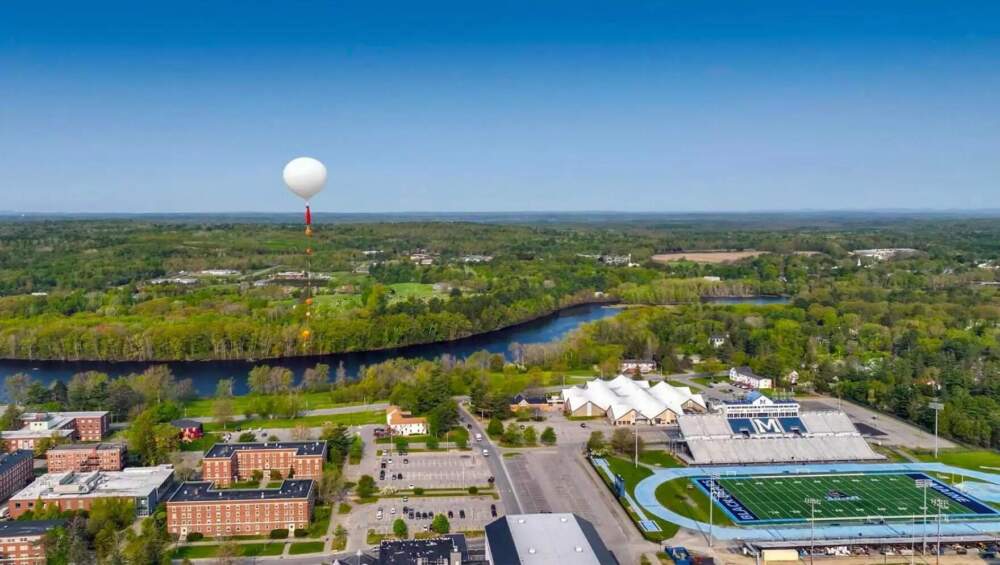Advertisement
UMaine to livestream total solar eclipse with high-altitude weather balloon

About 10 students from the University of Maine are preparing to launch a high altitude weather balloon that will livestream the total solar eclipse from the stratosphere on April 8.
The big unknown is where exactly the balloon launch will occur, said Rick Eason, an electrical and computer engineering professor emeritus at the University of Maine.
Students will monitor the forecast during the days before the eclipse and will project how fast the balloon will travel based on anticipated wind speeds at different locations in the path of totality. Eason said they won't choose a launch location until the morning of the eclipse.
"Putting all those pieces together, we're just going to keep our fingers crossed," he said. "Hopefully we can do this in Maine, but we're prepared to go to northern New York if we have to."
"We're just planning on getting up early and driving where we need to drive," Eason added. "We'll find a place to sleep that night if we have to."
The balloon, which has a parachute attached and expand up to 40 feet in diameter in the air, will launch about an hour or two before totality. It will travel above the clouds at up to 90,000 feet. The camera on board will capture the eclipse, though Eason said the group is hoping for clear skies.
"We can still launch the balloon and do the streaming part, even if it's not the best day," he said. "We can't view it on the ground. But once we get up not too far we'll be up above the clouds, and the balloon will be able to stream the video."
The group will position a Starlink satellite on the ground for the livestream.
Eason said he and a group of students traveled to Nevada last year to conduct a test launch. The UMaine High Altitude Ballooning Program also participated in the 2017 eclipse, when Eason led a group of students to launch two balloons from North Carolina.
The UMaine launch is part of a nationwide project involving 75 other institutions around the country and led by Montana State University. Some are launching their own high-altitude balloons from different points in the path of totality on the day of the eclipse. Others will launch smaller balloons every hour for 24 hours before and during the eclipse to gather atmospheric data.
This story is a production of the New England News Collaborative. It was originally published by Maine Public.